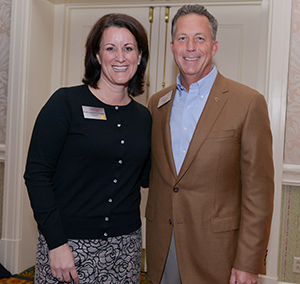Kendall College President Elected to NRAEF Board of Trustees
Wednesday, 25 March 2015 03:00
 Emily Williams Knight—the newest of three educators on the NRAEF’s board—is committed to helping more Americans achieve meaningful, fulfilling careers in the restaurant industry via a respected national industry platform.
Emily Williams Knight—the newest of three educators on the NRAEF’s board—is committed to helping more Americans achieve meaningful, fulfilling careers in the restaurant industry via a respected national industry platform.
Emily Williams Knight, president of Kendall College, Chicago, is among the newest members elected to the Board of Trustees of the National Restaurant Association Educational Foundation (NRAEF), the philanthropic foundation of the National Restaurant Association (NRA). Knight was welcomed to the board at the NRAEF’s annual meeting on Jan. 30 in Orlando, Fla. She will serve a two-year term with the possibility of serving two additional two-year terms. Knight is the first representative of Kendall College to serve the NRAEF in this capacity in the foundation’s 28 years.
As a new trustee of the 35-member board, Knight represents not only Kendall College’s Schools of Culinary Arts, Hospitality Management and Business to the NRAEF, but also the farther-reaching role of higher education in supporting the NRAEF’s strategic initiatives. These include creating educational programs that provide pathways to employment in the restaurant and foodservice industry and supporting an effective communications program that conveys opportunities for advancement in the industry, as well as the impact of community engagement.

 Familiarity with cooking and incorporating lentils into various menu applications can help your students meet nutrition regulations, budgets and consumer demands when they become foodservice professionals.
Familiarity with cooking and incorporating lentils into various menu applications can help your students meet nutrition regulations, budgets and consumer demands when they become foodservice professionals. Many students are not used to conducing structured observations and might not know what to look for and how often to record behaviors. The more explicit you are about how they should conduct the observation, the more likely it will be an effective learning experience.
Many students are not used to conducing structured observations and might not know what to look for and how often to record behaviors. The more explicit you are about how they should conduct the observation, the more likely it will be an effective learning experience.